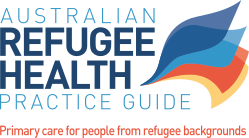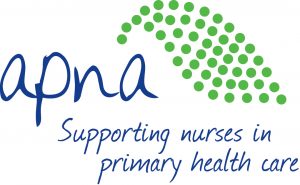
Human Immunodeficiency Virus (HIV)
Chris Lemoh, Marion Bailes, David Isaacs
Recommendations
- Offer HIV testing to all people aged ≥15 years, as prior negative tests do not exclude the possibility of subsequent acquisition of HIV.
- Routine HIV screening of children <15 years is not warranted except in unaccompanied or separated minors. Screening should also be completed in children <15 years where risk factors or potentially associated conditions have been identified (see text).
Overview
HIV remains an infection of global importance. In 2013, there were approximately 2.1 million new infections, including 240,000 children, and around 1.5 million people died of Acquired Immune Deficiency Syndrome (AIDS)-related causes. New HIV infections have been declining globally since 2001, but HIV epidemiology is dynamic. The region with the largest number of people living with HIV is still Sub-Saharan Africa, where adult HIV prevalence in several countries remains high.79,80
Australia has a relatively small HIV disease burden, with fewer than 27,000 people living with HIV, and 1,200 new HIV infections diagnosed annually, including approximately 200 cases previously diagnosed overseas. Around half of the people diagnosed with HIV in Australia each year are born overseas. The highest rates of HIV diagnosis are amongst people born in Sub-Saharan Africa and South East Asia These regions are also over-represented amongst heterosexually acquired cases of HIV and late HIV diagnoses.81–84
Currently available HIV treatments are not curative, but can suppress viral replication and
prevent immunological deterioration, achieving near-normal life expectancy.85
Delayed diagnosis of HIV leads to missed opportunities for prevention through behaviour
modification to reduce the risk of transmission. Delayed diagnosis also means delayed treatment. Early treatment gives better health outcomes, and is now seen as another important strategy to reduce transmission risk.82,86–91
Australian HIV testing guidelines recommend diagnostic testing when HIV infection is clinically suspected, including in people with opportunistic infections such as TB. Guidelines also recommend offering an HIV test to people with demographic or epidemiological risk factors for HIV exposure (such as history of sex between men or being born in or having travelled to a high-prevalence country); people diagnosed with another STI or blood-borne infection; and people with a history of events indicating risk of sexual or blood-borne infection. HIV tests are also recommended for all pregnant women.92
Historically, many of the regions from which people flee persecution are also regions of high HIV prevalence, such as Sub-Saharan Africa and South East Asia. Australian immigration policy requires HIV testing of all permanent visa applicants aged 15 years and older, including those applying for humanitarian (refugee) visas. Negative tests done prior to migration do not exclude the possibility of subsequent acquisition of HIV before migration to Australia, particularly in high prevalence regions.
People who have arrived as asylum seekers may also have been exposed to HIV in source or transit countries, including during incarceration or through sexual relationships with members of sub-populations with high HIV prevalence, such as people who inject drugs and sex workers.80 Asylum seekers in detention undergo screening for blood-borne viruses (in children this screening has been in place since mid 2014). Asylum seekers arriving by plane may not have had previous HIV testing, although an Immigrant Medical Examination (IME) (including screening for bloodborne viruses in those aged 15 years and older) is required if they are granted a substantive visa.
The prevalence of HIV in people from refugee-like backgrounds arriving in Australia is low and the pre-test probability of an HIV infection in a pre-screened individual from a low-prevalence country is minimal.39,41,43,48 Other guidelines have therefore suggested limiting re-testing to people from high-prevalence countries,93 in particular those from Sub-Saharan Africa, and there were different opinions within the EAG regarding this recommendation. However, given the possibility of HIV acquisition in the interval between pre-departure testing and arrival in Australia, the serious consequences of delayed diagnosis after migration for individual and public health, and that risk behaviours may be difficult to identify when consulting with a new arrival,41,93–95 the EAG recommends offering an HIV test to all people aged 15 years and over. Screening should also be completed in children <15 years where maternal status is unknown, in unaccompanied minors, if risk factors or potentially associated conditions have been identified.
History and Examination
Primary HIV infection may be asymptomatic, but is usually accompanied by a self-limiting illness producing infectious mononucleosis-like symptoms: fever, rash and generalised lymphadenopathy. Following primary infection, an asymptomatic phase lasts a median of 5 years before advanced immunodeficiency occurs, leading to the development of opportunistic infections and unusual malignancies associated with AIDS.96
Investigations
If a decision is made to offer HIV testing, obtaining informed consent is essential. In brief, the
practitioner offering the test needs to ensure that the patient understands: what HIV infection is and how HIV is transmitted; the benefits of knowing their HIV status; the availability of effective treatment and support in the event of a positive diagnosis; and that patient privacy and confidentiality regarding testing and results will be protected.92 The patient has the right to decline testing. The practitioner should request ‘HIV serology’ on the pathology request form. The initial test performed by the laboratory will be a combined HIV antibody/p24 antigen enzyme-linked immunosorbent assay (ELISA) test. As with all serological tests, a ‘window period’ exists during which a person infected with HIV may return a negative or indeterminate test. However, the window period for current testing kits has narrowed to two to three weeks after infection, and almost all people tested will have seroconverted within six weeks after infection. If the initial ELISA is positive, the laboratory performs a confirmatory Western blot. The Australian HIV testing policy currently recommends a three-month window period.92
Management and Referral
If HIV serology is performed and is negative, a brief post-test discussion should cover the ongoing importance of safe sex, both in Australia (with a reminder that HIV occurs in Australia) and if travelling overseas.
If HIV positive, a post-test discussion should cover: the good prognosis on treatment, patient
confidentiality, partner notification, and contact tracing. Referral to specialist services is important, including referral to culturally appropriate peer support organisations. Depending on the state and territory, HIV treating doctors may be ID or immunology physicians, sexual health specialists or a GP with S100 prescribing privileges (see links). Consider referring for counselling and psychosocial support.
It is now recommended that all people diagnosed with HIV should be offered treatment once the diagnosis is confirmed.97 Treatment of HIV infection requires combination therapy with multiple antiretroviral drugs, which suppress viral replication, and enable immune recovery. There is greater urgency to initiate treatment at lower CD4 counts. Treatment is urgent at a CD4 count ≤200 cells/μL or below, or at the diagnosis of an opportunistic infection or other ‘AIDS-defining illness’, since the median survival without treatment is around 18 months.98 At this level of CD4 count, prophylaxis against opportunistic infections may also be required.99
Follow Up
HIV infection is a chronic illness. Successful management requires patient empowerment and a holistic approach to long-term health and wellbeing.100 Adherence to antiretroviral treatment is of critical importance, but must be managed in the context of other physical and psychosocial conditions that both impact upon and are affected by, HIV infection and its treatment.
Immunisation in people with HIV
As with all people from refugee-like backgrounds, catch-up vaccinations are essential, unless
there is a record of previous immunisation. However, live vaccinations such as MMR or varicella should not be administered if the CD4 count is ≤200 cells/μL. The timing of such vaccinations should be discussed with the HIV care provider. Those who are not immune to hepatitis B require a higher dose of hepatitis B vaccination to achieve immunity: four double doses at 0, 1, 2 and 6 months (for adults, two normal adult doses of 20 μg, i.e. 40 μg on each visit; for children, a single adult dose of 20 μg on each visit).
Immunocompromised HIV patients who receive influenza vaccine for the first time should receive 2 vaccine doses, at least 4 weeks apart, and 1 dose annually thereafter.101 Pneumococcal vaccine is also recommended.101–103
Considerations in Pregnancy and for Children
Prevention of mother-to-child transmission
It is important for health workers caring for women living with HIV to initiate discussion about family planning and reproductive health early in the therapeutic relationship.104
The rate of HIV transmission from mother to child in the absence of treatment is approximately 25%, occurring mainly at delivery or via breastfeeding.105 A mother on effective HIV treatment with an undetectable viral load in pregnancy has a transmission risk to her infant of less than 0.1%.106 Also, effective combination therapy can suppress viral replication to a degree where breastfeeding is no longer contra-indicated.104
Diagnosis in infants and children
HIV infection may be diagnosed in newborn children using PCR. If HIV is not detected in the
infant’s blood by PCR, this effectively excludes HIV infection.106 However, maternal HIV
antibodies may be detectable for up to 18 months in the blood of an infant born to a mother
living with HIV, even in the absence of infant HIV infection. In infants born to women with HIV, serology should be performed at 18 months to confirm the infant is truly uninfected.
HIV-infected infants and children may present with failure to thrive or with opportunistic infections such as TB or Pneumocystis jiroveci pneumonia. Australian migration regulations do not require HIV testing for refugees and other immigrants aged under 15 years, unless specific risk factors are present, they are unaccompanied minors, or the child is migrating for adoption by an Australian citizen.18,83 This is reasonable, given that young children are unlikely to acquire HIV infection in the absence of maternal HIV infection or medical procedures early in life. Risks of sexual acquisition in older children exist if there is a history of sexual activity (which may also occur in children in the context of sexual abuse or sexual violence). Therefore, we recommend screening of infants and young children for HIV if individual risk factors are identified through history/testing or if there is identification of another condition (such as STI, active TB or an opportunistic infection).45 Unaccompanied or separated children should also be screened for HIV.
Antiretroviral therapy in children
Timely diagnosis of paediatric HIV infection is important, as infants may experience rapid disease progression and develop serious opportunistic infections in a shorter timeframe than adults. However, with effective treatment, children acquiring HIV at or soon after birth may expect to grow to a healthy adulthood. Specialist paediatric HIV services exist in all states and territories.
Links
AIDS Action Council of the ACT (AACACT)
Australasian Society for HIV Medicine (ASHM)
Australian Federation of AIDS Organisations (AFAO)
Australian GLBTIQ Multicultural Council (AGMC)
Easidose, a visual prescribing aid
HIV Management in Australasia (2009)
MOSAIC Blood Borne Virus Support Service (Relationships Australia, South Australia)
Multicultural Health and Support Service (MHSS)
Multicultural HIV and Hepatitis Service (MHAHS)
Northern Territory AIDS and Hepatitis Council (NTAHC)




